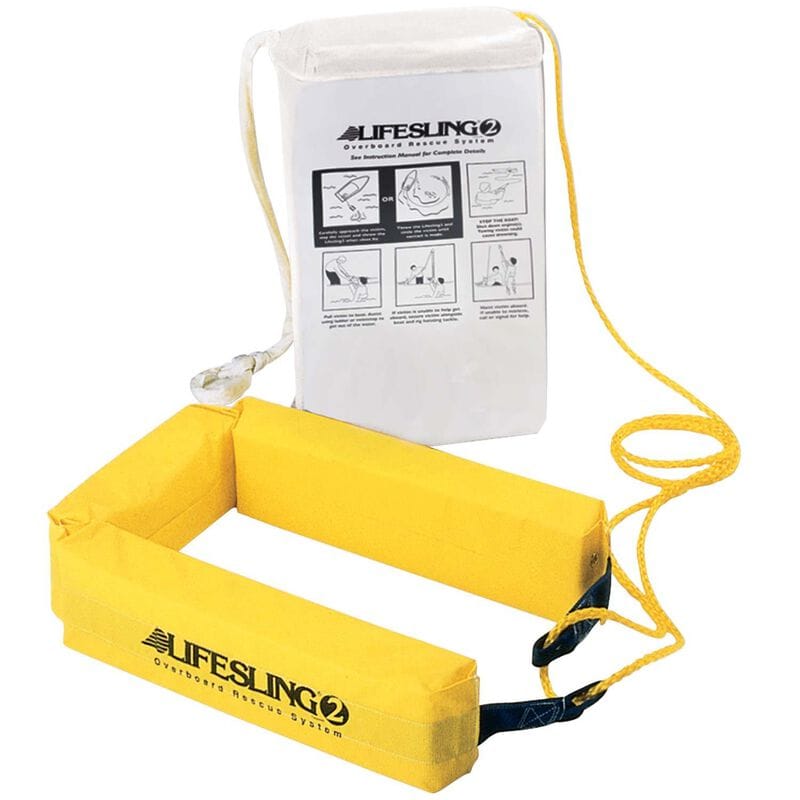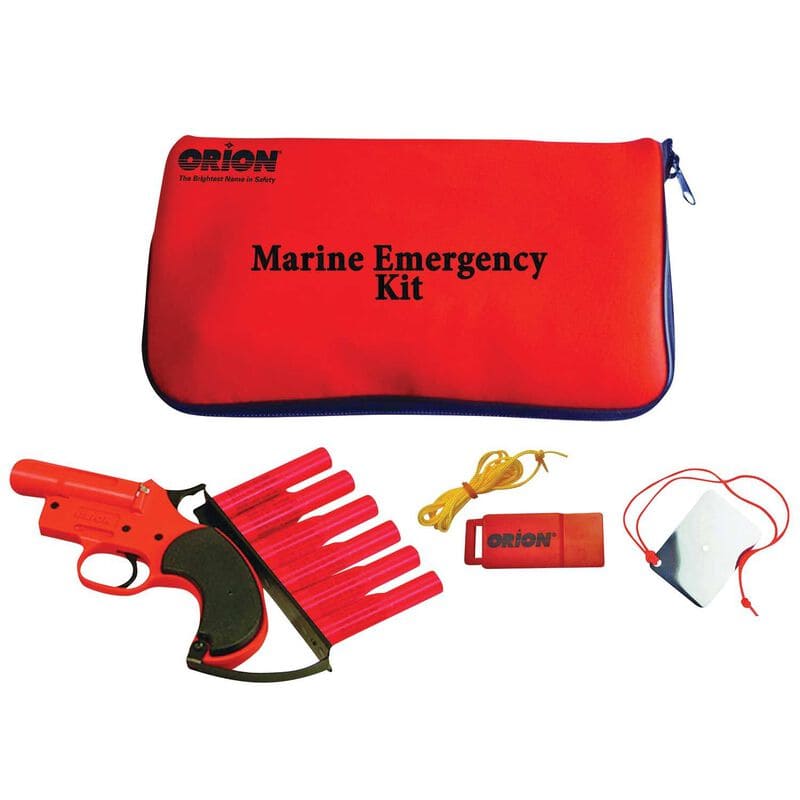15 Safety Gear Essentials for the High Seas.

Do you have all your safety gear aboard? Researching what to buy and where to register can be frustrating. Fear not, we have done it all and are here to help.
It can also be a bit frustrating to figure out what you actually are required to have and what is optional.
I wrote this post to help you, because we have already done it all, with two different boats – that means dealing with .gov twice…
For a complete collection of boating items, visit our Boat Gear Page.
Communication
Before you head out, know the weather and make sure you have a way to be reached and reach others on the water.
1. Fixed-Mound VHF Radio
Fixed-mount VHF connects to the mast antenna and has a wider range. It is typically mounted inside, at the navigation desk.
Since we had all Garmin instruments on our catamaran, I am linking to Garmin as well.
I could never sleep during coastal overnight passages, because there was always something happening – the water is a busy place!
In fact, we had a couple uncomfortably close passes, as vast as the ocean is – do not assume the bigger boats will see you on their radar (make sure your AIS works).
But it is smaller, rec boaters who leave the autopilot on and the radio off, who are the scariest.
Tip: Always keep at least one VHF on channel 16, when underway, to monitor for announcements, emergencies, or help needed on the water, within your area.
2. Hand-Held VHF
Hand-held VHF should always be around you, within easy reach, during passages.
I think we had three aboard, but we loved one the most, so it was the one used, while the other one was charging.
During longer passages, the VHF also become the hang-out spot for all the buddy boats, and the boat kids and their games.
Tip: A hand-held VHF is also a great gift for a boater. Here are more gift ideas: 51 Classic Gifts for Boaters. Ultimate Guide (Cruisers Approved)
Locator Beacons
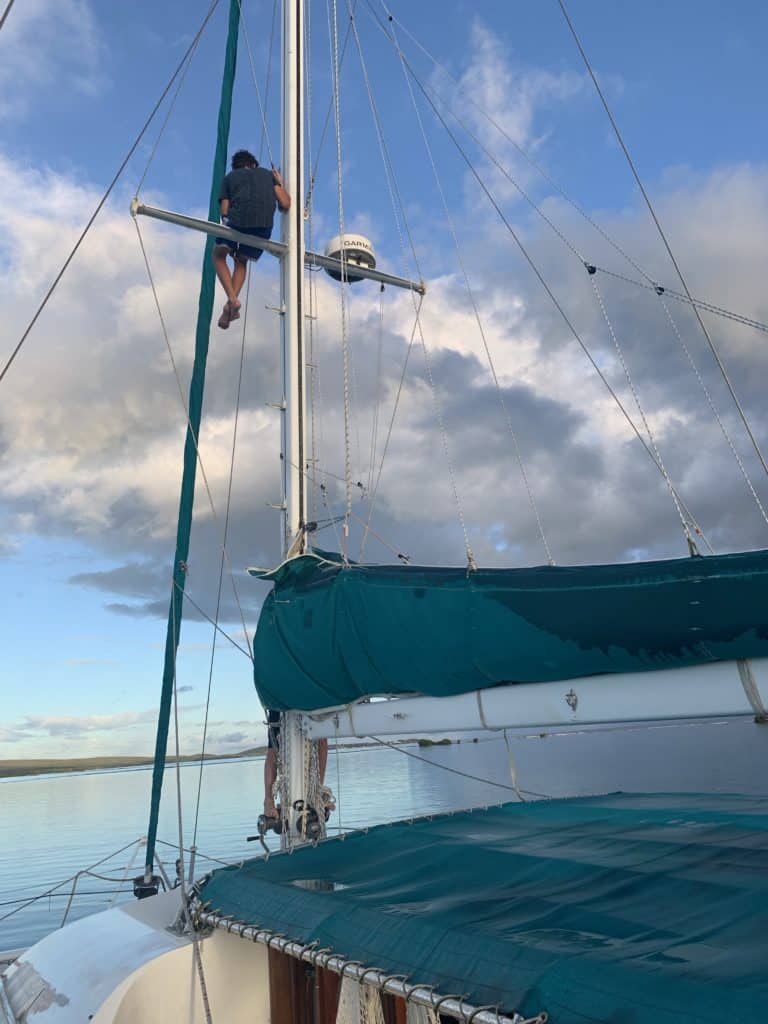
Locator safety gear includes EPIRB’s, PLB’s and satellite trackers. They are not required on a personal recreational vessel registered in the US, such as a sailboat.
They are required on commercial and passenger vessels*.
But, you should have a locator device aboard. If you are ever in a situation to be rescued out at sea, it may be your only chance of survival.
Speaking of survival, you might want to read my other helpful guide: First Aid Kit Aboard
Tip: Some countries do require such beacons**, so do check the regulations, based on where your vessel is registered.
3. EPIRB
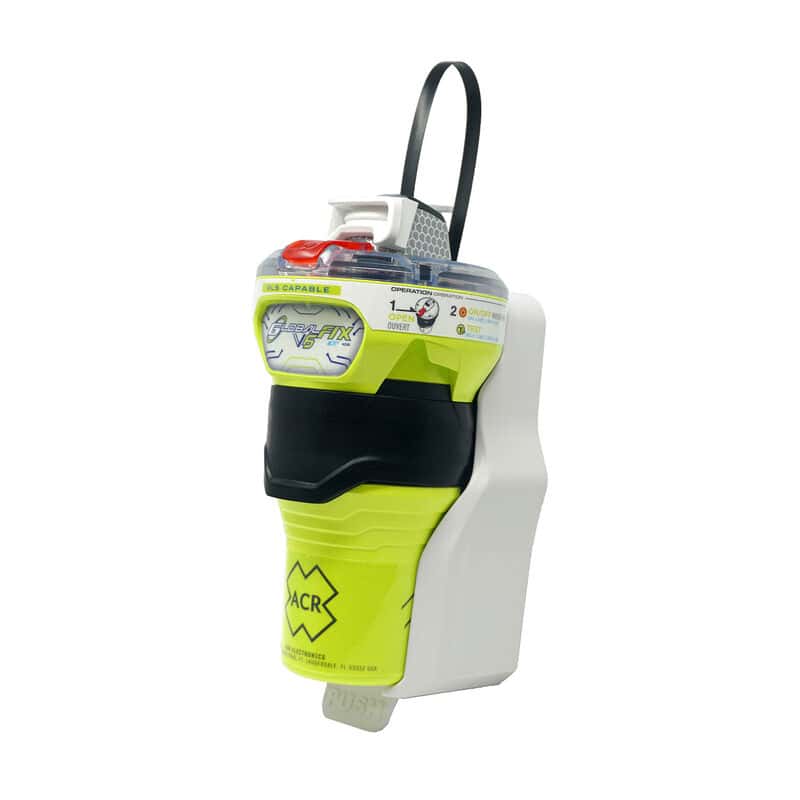
We had an ACR EPIRB Category II beacon on both of our boats, so it is what I am recommending. There is not much of a choice of EPIRB’s on the market anyway.
EPIRB stands for Emergency Position Indicating Radio Beacon. There are two categories:
- Category I – mounts outside on the boat. Will automatically float to top and transmit a signal, if vessel sinks.
- Category II – mounts inside and must be manually removed from the bracket to activate. We had that, to grab in the life raft, if needed.
When activated, it transmits a radio signal. Via SAR satellites, the signal reaches the rescue centers with the location of the beacon.
We always had an EPIRB on our boats, and we purchased ours at a discount, at a boat show. We have bought a bunch of boating gear at boat shows, actually.
Once you have the EPIRB aboard, remember:
- You are required to register your EPIRB. It is free: US Beacon Registration
- Attach the EPIRB to a place on the boat that is easily visible and reachable.
- If you must evacuate the boat, take the EPIRB with you.
- EPIRB’s are designed to float, keep it in the water when activated (attached to the boat, or life raft).
- Will automatically turn on in water, once detached from bracket.
- Mount it to ensure young kids do not play with the EPIRB aboard.

Note: Second generation beacons, 23-hex SGBs are not authorized for use in the US at the time of the publishing of this post.
4. PLB – Personal Locator Beacon
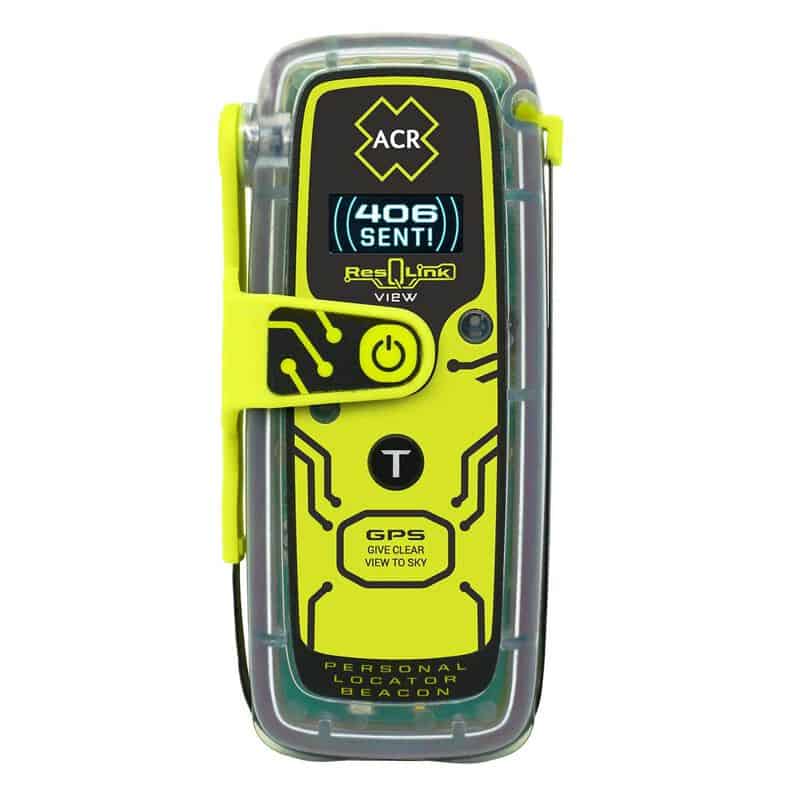
The PLB’s are smaller and easy to grab along on hikes, or for smaller vessels, kayaks, paddleboards.
It is very similar to an EPIRB, but due to its size, the battery life is about half of that of an EPIRB (24h versus 48h or more).
We decided not to buy a PLB, but had the EPIRB (above) and a satellite tracker (below). We felt that was sufficient in any of the exotic destinations we cruised.
It must be manually activated, unlike the EPIRB, which does it automatically once it is in the water.
Just like an EPIRB, you must register your PLB to be able to use it. Registration is free, via the NOAA. (US Beacon Registration).

Tip: Typically, an EPIRB is registered to the boat, whereas a PLB is registered to the individual. In either case, the either should remain where the people are.
5. Satellite Tracker
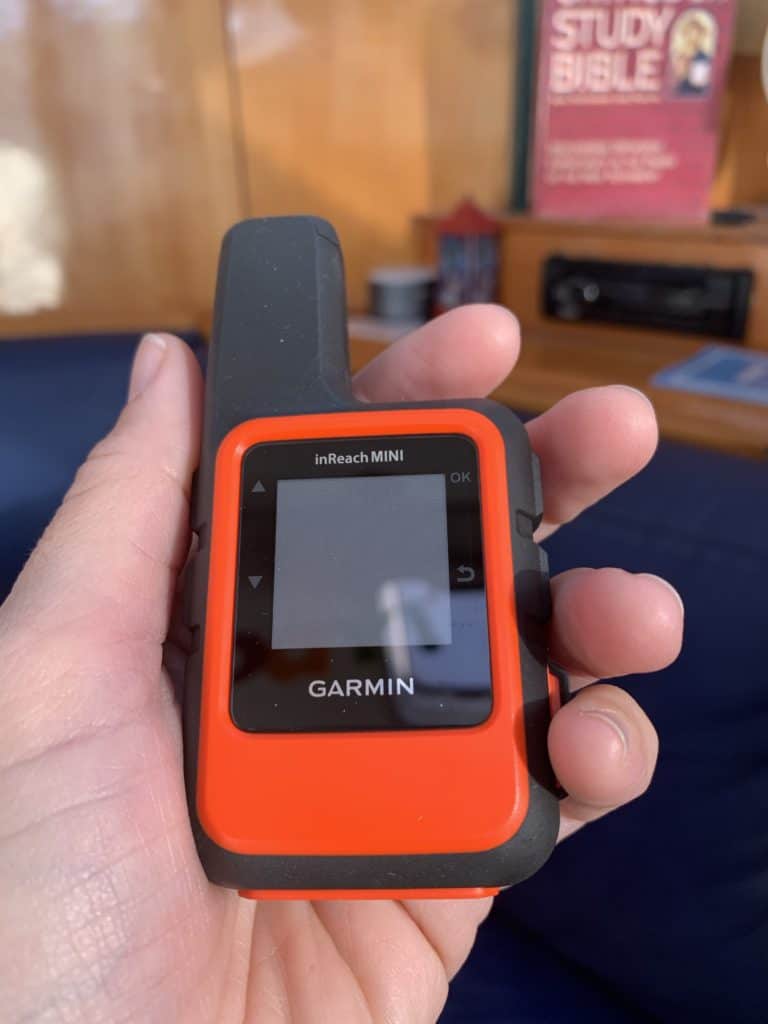
This is not technically a safety device, but it can be, because trusted friends and family have access to your location.
For more boating gadgets – 13 Gadgets for Boaters
We had the plan allowing for 10 messages per month, but you can go a step down, or pick a more comprehensive plan.
Our family and friends loved following each of our passages. It brought them peace of mind knowing we were OK, especially in places with no cell service, such as smaller, remote islands.
The InReach mini uses satellite to record location of the device. We would take it to all kinds of land hikes as well.
It was a bit tricky to explain why on earth we never sailed in a straight line. My parents, who are in a small mountain village, in Bulgaria, would always worry when we were headed to a destination, only to make a sharp turn, away from it.
So, expect loving interference, once you supply the password protected link to family and friends.

Tip: It would make a great gift for any boater, or hiker too. Oh, and I have more ideas for awesome gifts: 51 Classic Gifts for Boaters
PFD’s (Personal Flotation Devices)
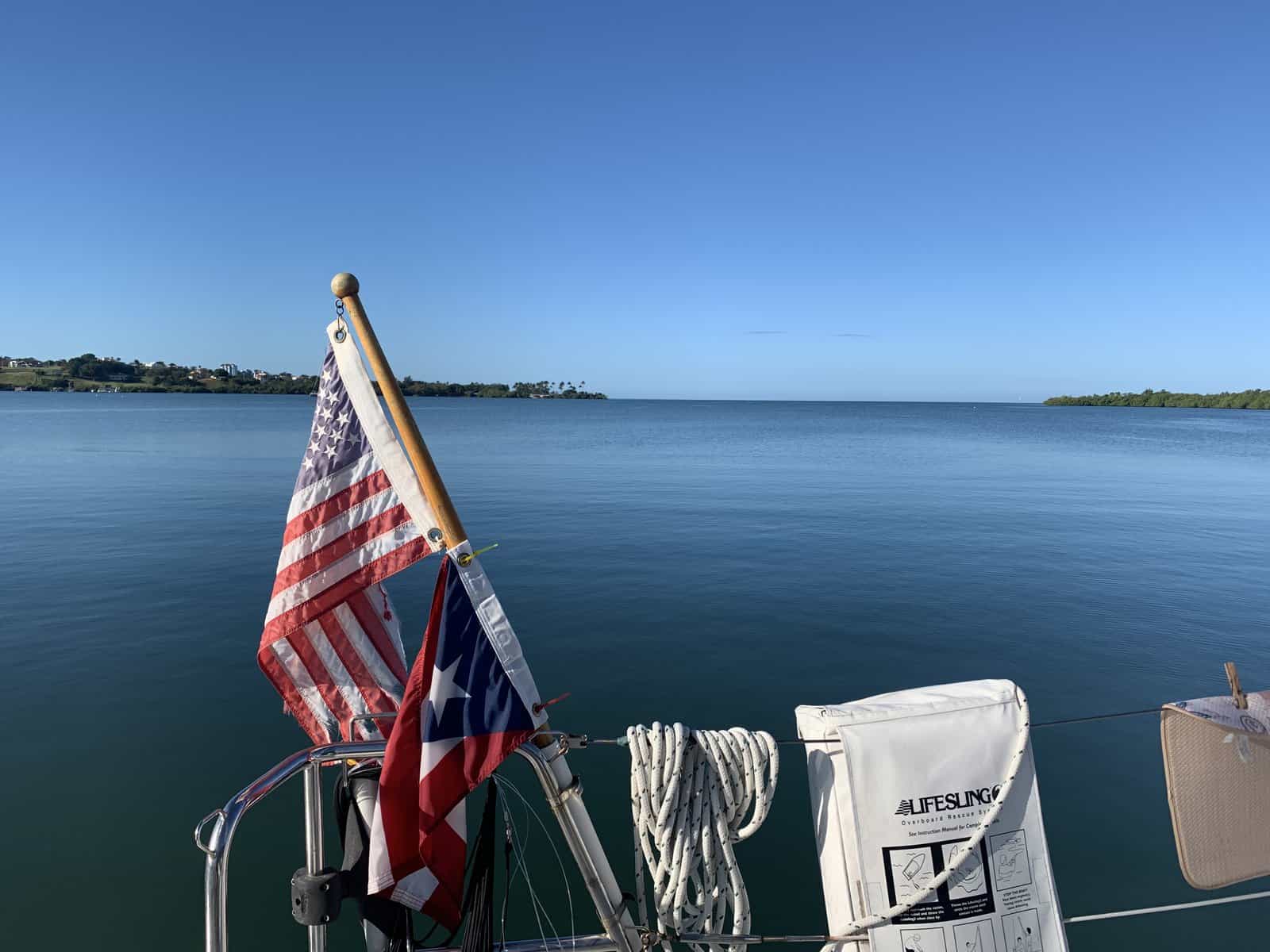
Personal floatation devices include life jackets, life vests, throwables, rings, etc.
I have a helpful post explaining PFD’s:
What is a PFD? Easy Guide and Common Questions.
6. Life Jacket
We had different types of life jackets aboard, suitable for different activities.
I wrote a long post with suggestions for life jackets and tips for use:
10 Most Reliable Sailing Life Jackets (Adults and Kids)
7. Throwable Cushion
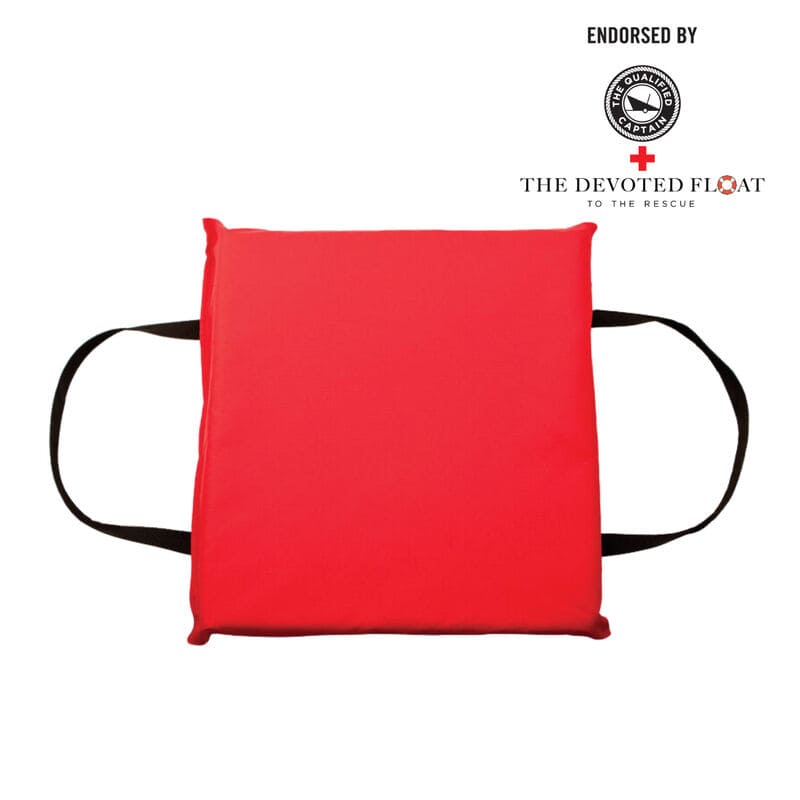
Throwable Foam Cushion USCG Approved
We had a few of these, and used them for pillows in the cockpit, while seasick underway.
We also used them to sit on, to lean on, to fight with.
Basically, we have used them for everything imaginable, except what they were intended for. And praise be to God for that.
A throwable cushion must be within an arm’s reach, always, while the vessel is underway.
Tip: Our throwables lived in the cockpit, in the shade, all the time, so we never had to look for them.
8. Life Sling
Lifesling2 Overboard Rescue System
Another PFD, which can be life-saving and must be always within quick and easy reach.
Keep in mind the reach must be quick and easy!
We had one of these, as well as a ring buoy. Either will work, but the Lifering’s design is excellent for towing a person, who might not be able to hold on to a ring.
We had ours in the soft bag, which attached to the lifelines. It is an extra step to open the case and throw the PFD, but while we lived on the boat, sun damage was too great for anything to be sitting outside continuously.
For other useful boating bags – 19 Best Boating Bags. Tips How to Use Them.
Tip: I recommend practicing throwing the life-sling, while not getting it all completely tangled up.
Harnesses and Tethers
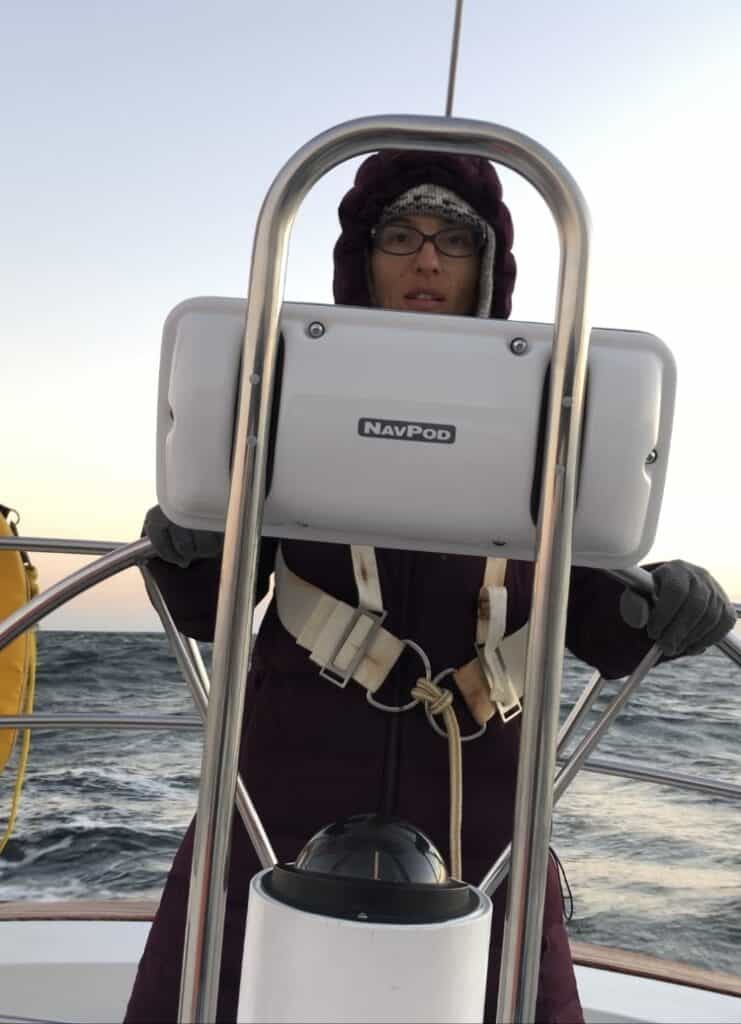
Harnesses and tethers are, in a way, more important for me, than life jackets. To be attached to the boat is vital during passages. Especially when doing a shift alone.
9. Tethers
SPINLOCK 1 Clip & 1 Link Elastic Safety Tether
This tether is for attaching your harness to the jacklines you have run on the boat.
You must always be attached to the boat, while moving about on deck, underway.
I will be a bit too personal here and share that the captain and I had a very passionate fight about this, after I found out he had been out, on the bow, fixing the main sail, while I was asleep, without a tether, without a life jacket, in the Trade Winds’ waves around Luperon, Dominican Republic.
End of personal story – run the jacklines. There are countless YouTube videos on how to do this. Then put on a harness and clip yourself to the jacklines, using the tether.
Many life jackets (like the inflatables I recommend in this post) come with D rings to attach the tether to. So, you don’t need a separate harness.
Tip: If your life jacket does not come with a harness, you have to get one and put it on, in addition to having the life jacket on. Hence the nice added bonus of a harness on many life jackets.
10. Safety Harness
Ultimate Safety Harness
If your life jacket does not come with a harness, you will have to buy one and put it on, while underway and out on deck, especially in rough weather.
I slept much easier during passages when Joe had a harness on, during his shift, and was tethered to the boat. To me, a reliable safety harness is even more important than a life jacket.
The size can be regulated, so you might only need one for adults and teens. We only had ours for the adult on shift, alone.
Note: Even during a calm passage, if you are alone on deck and slip and fall, no one will notice. Especially if the autopilot is on and the boat continues sailing. Non-slippery shoes for sailing are in this post.
More essential items
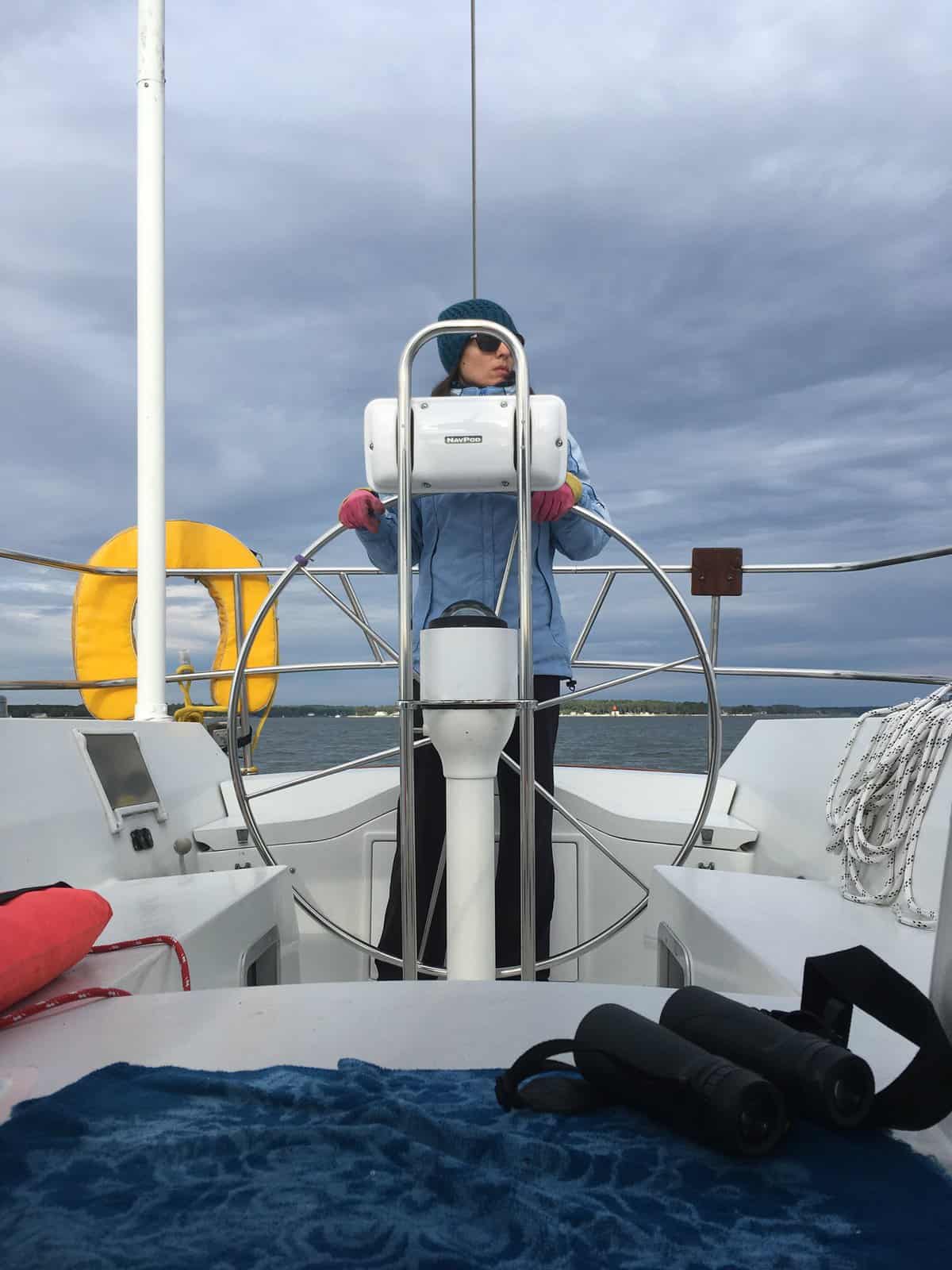
Below are a few other items you must have aboard, and within easy reach. By the way, these will all make excellent gifts for boaters.
11. Distress light
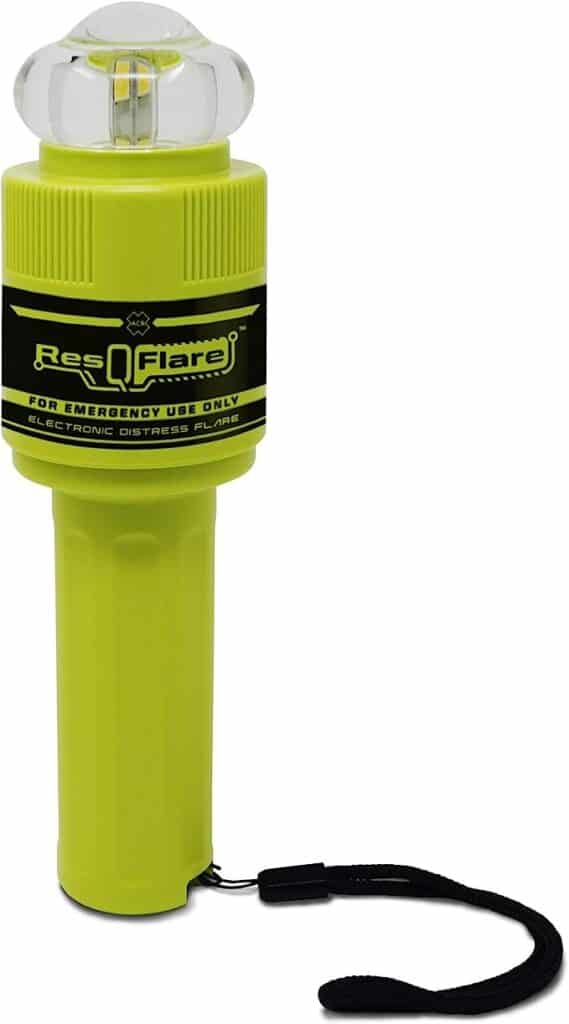
ACR ResQFlare Electronic Distress E-Flare and Flag, USCG Approved
Some life jackets come with distress light included. But many do not.
This particular E-flare will provide at least 6 miles of visibility and will right itself once in the water, to assume upright position.
Per the manufacturer, it has 20 hours of operational life.
Our Type I vests all came with lights, so we did not need to purchase additional ones. We did not think it was necessary to equip our recreational-use life jackets with lights, whistles, or knives, because we always used those close to shore.
Note: If your life jacket / vest does not come with some sort of light, there should be loops, or straps to attach accessories.
12. Flares
Coastal Alert Flare Kit with Accessories
We are grateful that we never had to use flares aboard. But they were always easily accessible, if needed.
Actually, we were in a bit of a scare once, while some guys came way too close to our boat asking to come aboard, in a non-friendly manner (to say the least). The thought of grabbing those flares crossed my mind.
Here is a simple and popular flares kit, just check where the price is better (West Marine matches prices for items sold via Amazon, and you get points for discounts later on, just fyi).
Tip: If it is easier, get two sets – one easily accessible aboard, and one in your ditch bag.
13. Binoculars
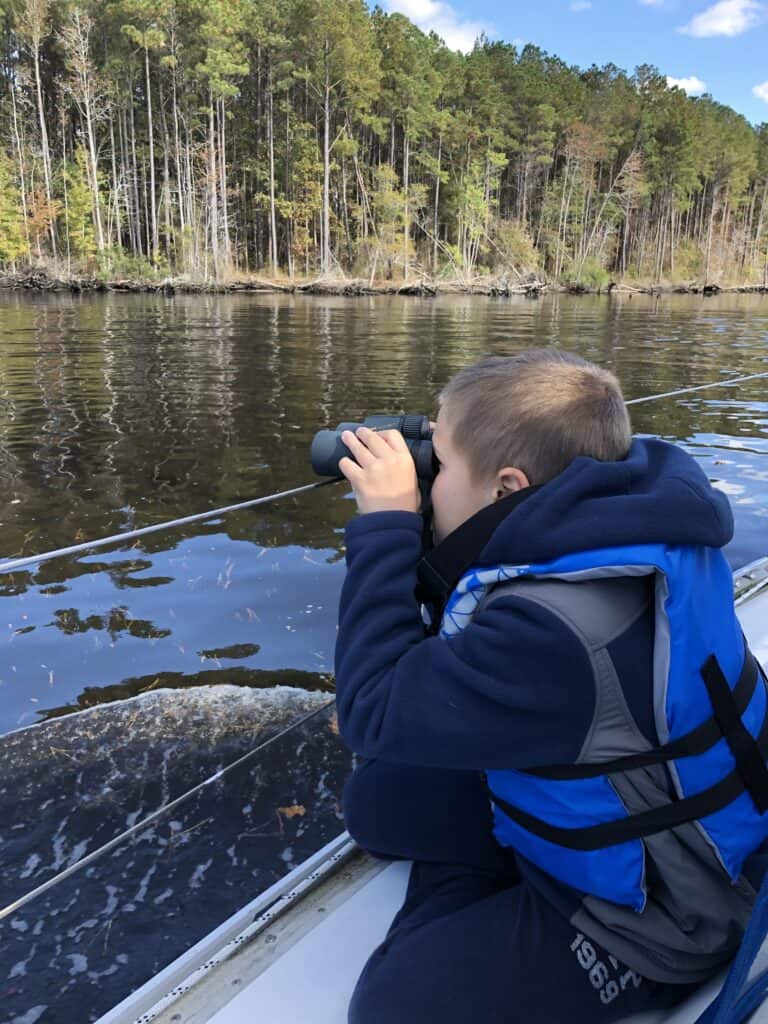
You absolutely need a pair of good binoculars aboard.
You will need them to navigate channels, look for crab pots and fish nets, as well as spy on that 10 million-dollar yacht next to you, at the anchorage 🙂
Come on, you have never thought of that?
In all seriousness, however, binoculars are a must aboard.
We love our small birdwatching binoculars, because they are of excellent quality and I could easily hold them with one hand, while grabbing onto the rigging with the other.
Tip: Binoculars are an excellent gift for any boater. Check out even more cool boating gadgets in my post: 13 Gadgets for Boaters (2023)
14. Spotting Flashlight
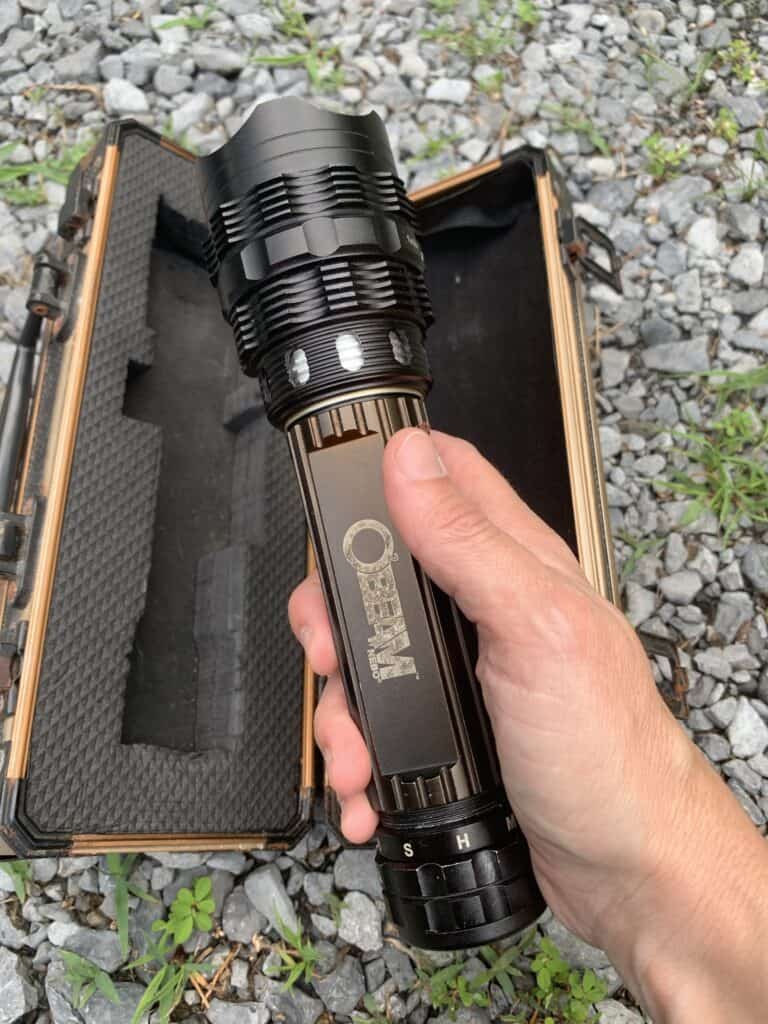
Buy a spotlight flashlight. We had a traditional marine and a spotlight (quite similar), and we liked the spotlight better.
We had to navigate poorly marked channels at night more times than I was comfortable with, so I was always charged with spotlight and yell-back duty.
I am linking to two different ones, than the one we had, because ours came as a gift long time ago, and I cannot find where they might still sell it.
Tip: This is another great gift for any boater. If they have one already, it doesn’t matter, they will be even better off with two. Especially if little hands grab and drop it during a passage…
15. Whistle
LuxoGear Emergency Whistles with Lanyard Safety Whistle
These are super easy to attach to a life jacket. You must have one, definitely on the offshore PFD you are using.
They are cheap, super loud (120 dB), and super easy to use. I don’t really feel I should be offering any special instructions, or tips.
Actually, one tip – you might be tempted to use these to summon your shore party back aboard. I would advise against that. Especially if there are other boaters around.
Just use either walkie-talkies, or a VHF to communicate with the crew on the beach.
I have a few great ideas in my helpful post:
Tip: The use of any emergency signal should be limited to emergencies only, to avoid confusion.
To Summarize
It’s quite a few items, I know. Believe me, it took us a while to gather everything.
We actually had a few more safety items aboard, but they are more of a personal preference.
We mostly did what I recommend – browse Amazon, West Marine and a few other retailers, for the cheapest price.
If you get a chance to attend a boat show, try to buy some gear there, they usually have nice discounts.
Tip: If you are a West Marine Rewards member, get them to match the Amazon price (for items sold directly from Amazon) and collect the points for more discounts later. It’s what we did.
More Essential Boating Gear
10 Most Reliable Sailing Life Jackets for Adults and Kids
What is a PFD? Easy Guide and Common Questions.
First Aid Kit Aboard – Supplies and Organization
27 Important Tools for Boaters
References
- * US Coast Guard – 11E-EPIRBs.pub (uscg.mil)
- ** Boating Safety Magazine – Register Your 406 Mhz EPIRB or PLB

